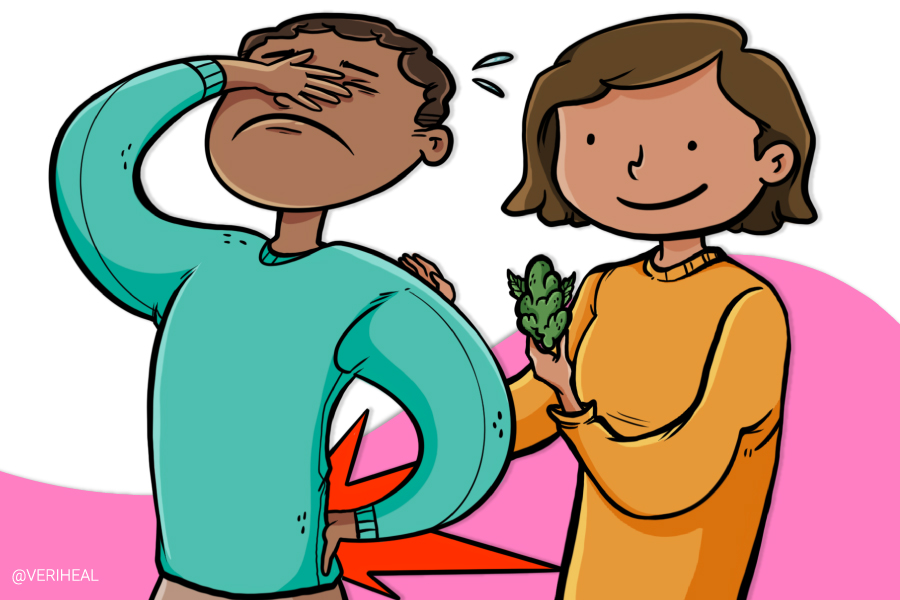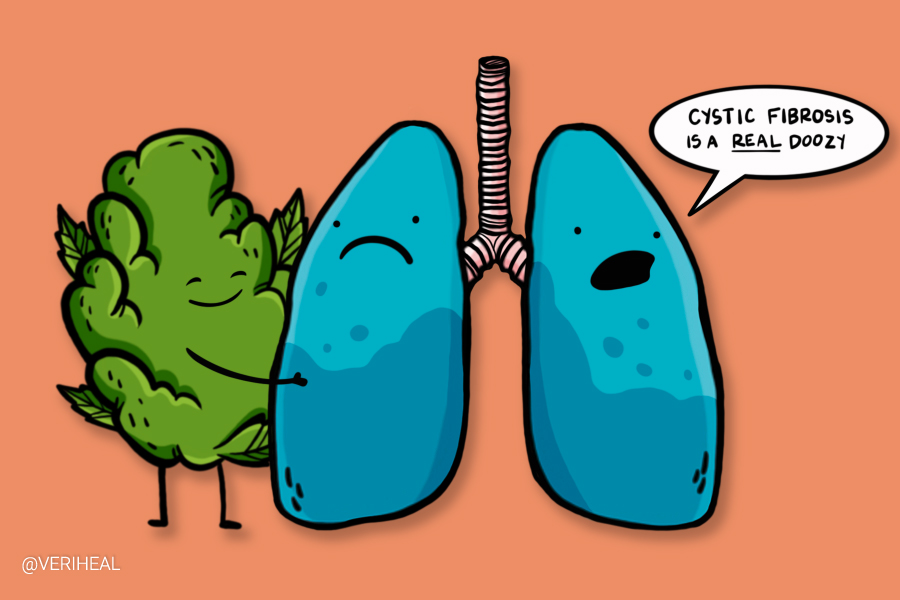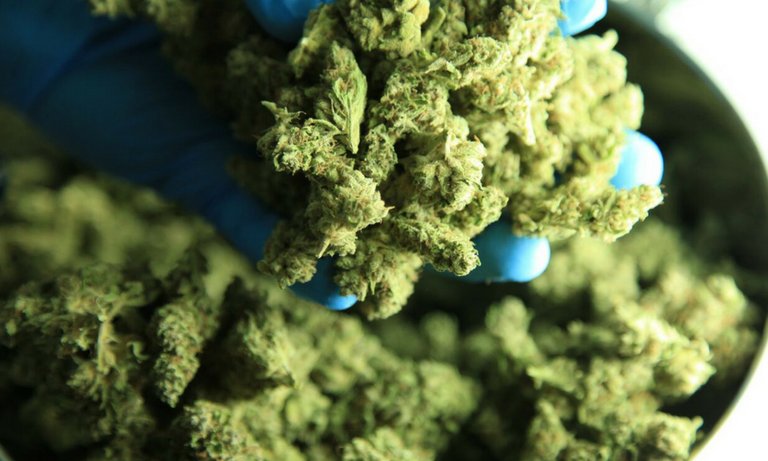Medical Marijuana for Treating Muscle Spasticity

- Spasticity Disorders
- Different Treatment Recommendations for Spasticity
- Medical Marijuana and Spasticity: Considerations to Keep in Mind
- What Does the Science Say About Medical Cannabis and Spasticity?
For many patients with spasticity, including those with multiple sclerosis (MS), spinal cord injuries, cerebral palsy, stroke, and certain metabolic diseases, muscle spasms are a real issue. Many of these patients experience hypertonicity, increased muscle tone, as well as muscle spasms and clonus, which is when muscles spasm rapidly (21). These patients also experience issues with walking and completing daily activities as their muscles are so tight, they are painful and unable to move. Often, these symptoms stem from damage to the nervous system.
Medical cannabis has proven to be a potential alternative for patients who are unable to get relief from their spasticity with traditional muscle relaxers and pain medications. In 2014, the American Academy of Neurology (AAN) released its official position on the use of cannabis treatments for patients with MS (11). Although there has been a substantial amount of studies looking into marijuana for spasticity, most of these studies focus on Sativex, a synthetic oral spray, oral cannabis extract, and synthetic Δ9-tetrahydrocannabinol (THC).
The AAN found that oral cannabis extract and synthetic THC are probably effective at treating spasticity and pain, but studies involving smoking cannabis have not produced enough evidence on the safety and effectiveness of marijuana treatments (24). However, patients with amyotrophic lateral sclerosis (ALS) report that smoking cannabis decreases their pain and muscle spasticity while increasing muscle relaxation and their ability to sleep (22).
Cannabis can help calm muscle rigidity and spasms by targeting the central nervous system through CB1 and CB2 receptors, a major component of the endocannabinoid system. The endocannabinoid system consists of self-made fat-based neurotransmitters that can affect a variety of bodily functions including pain perception and modulating the immune system.
Spasticity Disorders
The following disorders are associated with spasticity as a major symptom (14). This list does not include all conditions where muscle spasticity is an issue.
- Cerebral Palsy
- Multiple Sclerosis
- Amyotrophic Lateral Sclerosis (ALS) (22)
- Stroke
- Spinal Cord Injury
- Traumatic Brain Injuries
- Neurodegenerative diseases affecting the upper motor neuron, pyramidal, and extrapyramidal pathways (20)
- Hereditary spastic paraplegias (21)
- Adrenoleukodystrophy (21)
- Phenylketonuria (21)
- Krabbe Disease (21)
Different Treatment Recommendations for Spasticity
Sativex, a prescription medication consisting of a 1:1 ratio of THC to cannabidiol (CBD) is approved in over 25 countries including the UK for use in patients with spasticity and MS that have not seen success with other therapies (25) (3). It comes in an oral spray that is administered underneath the tongue or toward the inside of the cheeks. Most patients use 4-8 sprays a day for spasticity but can go above 12 sprays if they are able to tolerate it and find it helpful.
An open-label study examining long-term use of Sativex found that patients used a maximum dose of Sativex that was equivalent to 130 mg of THC and 120 mg of CBD and self-administered an average of 7.3 doses per day (19). There was no evidence in this trial of 146 patients of tolerance to Sativex developing and the patients who continued to participate in the study continued to report benefits after 334 days.
It is important to follow your doctor’s recommendations about using Sativex and finding the dosages that are right for you. Sativex has not been approved for use in those who are under the age of 18 (3). There are other marijuana-based medications available, but they are not all approved in the United States. They include nabilone and dronabinol which are used to treat nausea and vomiting in cancer.
Though there are no official guidelines available for patients who decide to use medical marijuana that includes THC and CBD, the Sativex guidelines are a useful place to begin considering doses. While seeing a provider with Veriheal’s network, you will likely receive guidance on strains and dosages to help treat spasticity.
Medical Marijuana and Spasticity: Considerations to Keep in Mind
Taking medical marijuana for spasticity may not be for everyone, despite its ability to relax muscles and reduce pain. The AAN’s review study sites that while there was no significant laboratory, blood, urologic, or cardiac changes, some patients may experience the following (24):
- Somnolence
- Drowsiness
- Lightheadedness
- Difficulty concentrating
- Negative impact on coordination and balance (9)
- Increased appetite (22)
More rare symptoms include (24):
- Increased muscle pain, or myalgia
- Lower limb weakness
- Increased spasticity
- Increased seizures
It is important to talk to the doctors who are treating your spasticity before beginning cannabis treatment for spasticity as there is a possibility of drug interactions and the adverse effects listed above. Certain populations like the elderly may need to exercise more caution if taking cannabis, and slowly learn how it affects their body.
What Does the Science Say About Medical Cannabis and Spasticity?
A 2012 study examined the effects of smoking marijuana versus placebo on patients with MS and spasticity. This study examined results from a total of 30 patients and concluded that when examining spasticity with the Ashworth scale, patients who received the cannabis cigarette experienced an average of a 2.95 decrease in spasticity and an 8.27 average decrease in pain scores compared to patients who received the placebo (2).
In several research studies, Sativex (also known as Nabiximols) has promising results. These studies discussed in a clinical review have shown that Sativex is very effective at reducing limb spasticity and chronic pain in patients who have MS. Researchers suggest that up to 80% of MS patients experience spasticity as a symptom (16). A different review suggests that cannabis-based medicines and whole cannabis consistently show improvements on the Ashworth scale in spasticity in patients with MS and paraplegia (23).
Note: Veriheal does not intend to give this as professional medical advice. Do not attempt to self-diagnose or prescribe treatment based on the information provided on this page. Always consult a physician before making any decision on the treatment of a medical condition.
1. Ayala, L., Winter, S., Byrne, R., Fehlings, D., Gehred, A., Letzkus, L., . . . Maitre, N. L. (2020). Assessments and interventions for spasticity in infants with or at high risk for cerebral palsy: A systematic review. Pediatric Neurology. https://www.pedneur.com/article/S0887-8994(20)30349-0/fulltext
2. Corey-Bloom, J., Wolfson, T., Gamst, A., Jin, S., Marcotte, T. D., Bentley, H., & Gouaux, B. (2012). Smoked cannabis for spasticity in multiple sclerosis: a randomized, placebo-controlled trial. CMAJ : Canadian Medical Association journal = journal de l’Association medicale canadienne, 184(10), 1143–1150. https://www.ncbi.nlm.nih.gov/pmc/articles/PMC3394820/
3. GW Pharma Ltd. (2019, December 11). Product Monograph Including Medication Information Sativex. Cambridge UK. https://omr.bayer.ca/omr/online/sativex-pm-en.pdf
4. Ingram, G., & Pearson, O. R. (2019). Cannabis and multiple sclerosis. Practical Neurology, 19(4), 310-315. https://pn.bmj.com/content/19/4/310.full
5. Jansheski, G., MD. (2020, March 30). Cerebral Palsy and Medical Marijuana. Retrieved March 06, 2021, from https://www.cerebralpalsyguidance.com/cerebral-palsy/treatment/medical-marijuana/
6. Koppel, B. S., Brust, J. C., Fife, T., Bronstein, J., Youssof, S., Gronseth, G., & Gloss, D. (2014). Systematic review: efficacy and safety of medical marijuana in selected neurologic disorders: report of the Guideline Development Subcommittee of the American Academy of Neurology. Neurology, 82(17), 1556–1563. https://www.ncbi.nlm.nih.gov/pmc/articles/PMC4011465/
7. Landa, L., Jurica, J., Sliva, J., Pechackova, M., & Demlova, R. (2018). Medical cannabis in the treatment of cancer pain and spastic conditions and options of drug delivery in clinical practice. Biomed Pap Med Fac Univ Palacky Olomouc Czech Repub., 162(1), 18-25. https://biomed.papers.upol.cz/pdfs/bio/2018/01/03.pdf
8. Libzon, S., Schleider, L. B., Saban, N., Levit, L., Tamari, Y., Linder, I., Lerman-Sagie, T., & Blumkin, L. (2018). Medical Cannabis for Pediatric Moderate to Severe Complex Motor Disorders. Journal of child neurology, 33(9), 565–571.https://pubmed.ncbi.nlm.nih.gov/29766748/
9. Mack A, Joy J. Marijuana as Medicine? The Science Beyond the Controversy. Washington (DC): National Academies Press (US); 2000. 7, MARIJUANA AND MUSCLE SPASTICITY. Available from: https://www.ncbi.nlm.nih.gov/books/NBK224382/
10. Malfitano, A. M., Proto, M. C., & Bifulco, M. (2008). Cannabinoids in the management of spasticity associated with multiple sclerosis. Neuropsychiatric disease and treatment, 4(5), 847–853. https://www.ncbi.nlm.nih.gov/pmc/articles/PMC2626929/
11. Marijuana faqs. (n.d.). Retrieved March 06, 2021, from https://www.nationalmssociety.org/Treating-MS/Complementary-Alternative-Medicines/Marijuana/Marijuana-FAQs
12. MEDICAL MARIJUANA IN CERTAIN NEUROLOGICAL DISORDERS [PDF]. (2014). Minneapolis: American Academy of Neurology.
13. Pandey, K., MD. (2020, January 23). Spasticity differential diagnoses. Retrieved March 05, 2021, from https://emedicine.medscape.com/article/2207448-differential#
14. Petro, D. J., & Ellenberger, C., Jr (1981). Treatment of human spasticity with delta 9-tetrahydrocannabinol. Journal of clinical pharmacology, 21(S1), 413S–416S. https://pubmed.ncbi.nlm.nih.gov/6271839/
15. Rabiei Z. (2019). Phytotherapy as a Complementary Medicine for Multiple Sclerosis. Turkish journal of pharmaceutical sciences, 16(2), 246–251. https://www.ncbi.nlm.nih.gov/pmc/articles/PMC7227963/
16. Rice, J., Hugos, C., Hildebrand, A., & Cameron, M. (2020). Cannabis use in people with multiple sclerosis and spasticity: A cross-sectional analysis. Multiple sclerosis and related disorders, 41, 102009. https://pubmed.ncbi.nlm.nih.gov/32086163/
17. Russo E. B. (2018). Cannabis Therapeutics and the Future of Neurology. Frontiers in integrative neuroscience, 12, 51. https://www.ncbi.nlm.nih.gov/pmc/articles/PMC6200872/
18. Serpell, M. G., Notcutt, W., & Collin, C. (2013). Sativex long-term use: an open-label trial in patients with spasticity due to multiple sclerosis. Journal of neurology, 260(1), 285–295. https://pubmed.ncbi.nlm.nih.gov/22878432/
19. Spasticity. (n.d.). Retrieved March 05, 2021, from https://www.hopkinsmedicine.org/health/conditions-and-diseases/spasticity
20. Spasticity information page. (n.d.). Retrieved March 05, 2021, from https://www.ninds.nih.gov/Disorders/All-Disorders/Spasticity-Information-Page
21. Suryadevara, U., Bruijnzeel, D. M., Nuthi, M., Jagnarine, D. A., Tandon, R., & Bruijnzeel, A. W. (2017). Pros and Cons of Medical Cannabis use by People with Chronic Brain Disorders. Current neuropharmacology, 15(6), 800–814. https://www.ncbi.nlm.nih.gov/pmc/articles/PMC5652027/
22. Whiting PF, Wolff RF, Deshpande S, et al. Cannabinoids for Medical Use: A Systematic Review and Meta-analysis. JAMA. 2015;313(24):2456–2473. https://jamanetwork.com/journals/jama/fullarticle/2338251
23. Yadav, V., Bever, C., Bowen, J., Bowling, A., Weinstock-Guttman, B., Cameron, M., . . . Narayanaswami, P. (2014). Summary of EVIDENCE-BASED Guideline: Complementary and alternative medicine in Multiple sclerosis: Report of the guideline Development subcommittee of the American Academy of neurology. Neurology, 82(12), 1083-1092. https://n.neurology.org/content/82/12/1083.full
24. Parsons, L. (2020, November 4). GW pharma begins recruitment for US-based Sativex trial. PharmaTimes. http://www.pharmatimes.com/news/gw_pharma_begins_recruitment_for_us-based_sativex_trial_1355931







